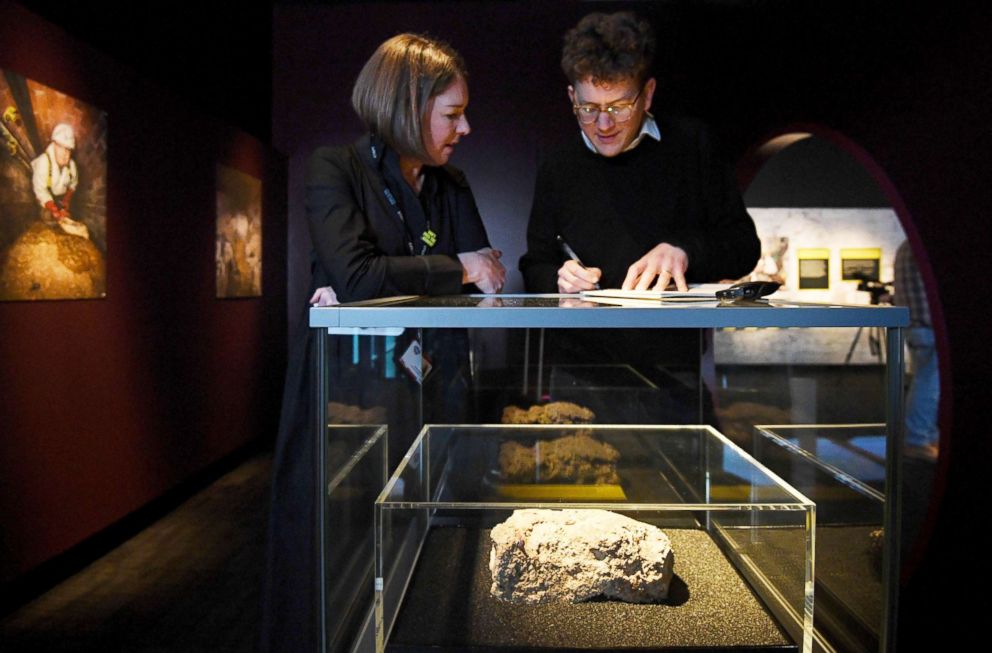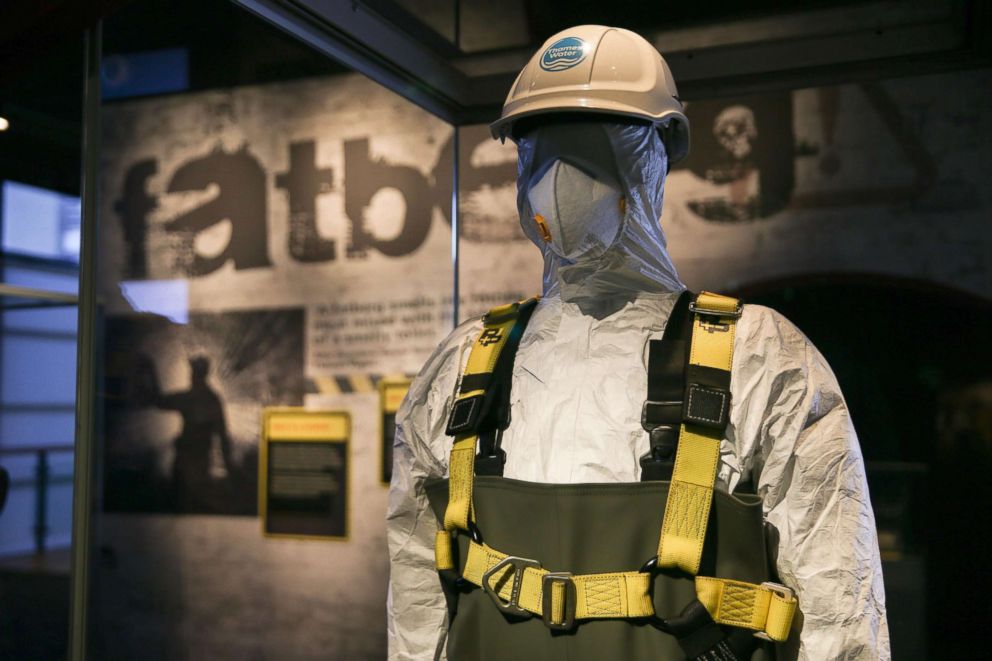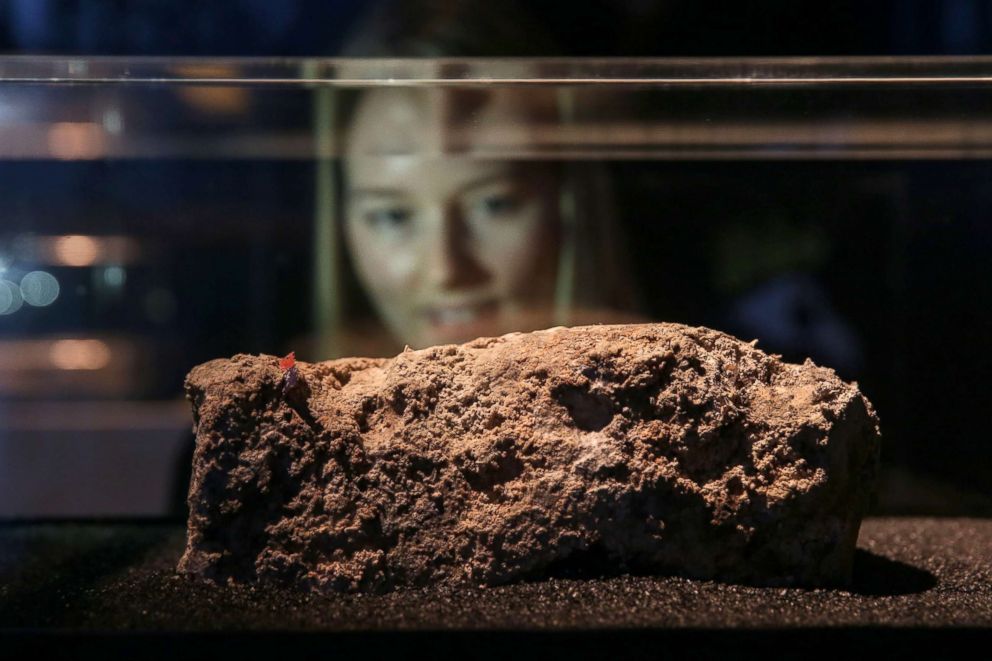Pieces of giant 'fatberg' sewer system clog on display in London
Clog from the city's sewer system weighed 130 tons and was called "the beast."
— -- It weighed more than 143 U.S. tons and was 820 feet long and now all that remains of a massive sewer blockage that has been called "the beast" fits into two small glass cases, on display at The Museum of London.
The enormous "fatberg" was found in one of London’s Victorian-era sewers, in Whitechapel, east London.

Other fatbergs -- clogs made up of oils, fats, greases, wet wipes and everything else that ends up in London’s sewers -- have been found in the system before, but this was a monster. Because the masses of waste usually calcify and become as hard as concrete, destroying one is also difficult, slow work. After this one was removed from the sewer, the Museum of London decided to display part of it.
For the museum, the fatberg was a "a very unusual museum object, which is part of a live experiment" and something no other museum has attempted before, Sharon Robinson-Calver, Head of Conservation & Collection Care at the Museum of London, told ABC News.
But displaying the fatberg has created all sorts of problems, too.

“Because the fatberg has come from an environment that is essentially raw sewage," Robinson-Calver said, "there are lots of hazards and risks associated with that."
One of the main risks is disease particularly Weil’s disease that can cause kidney failure and death as well as E.coli and salmonella. To minimise the risks the fatberg samples were initially air-dried to slow down the bacterial growth and then encapsulated in two specially sealed boxes inside show cases.
The fatberg’s been on display for more than two weeks now and strange things are happening to it. It’s sweating from being enclosed in its case and the museum has noticed that it’s hatching flies.

Robinson-Calver hopes the exhibition will raise awareness and warns that if we continue to put fats, greases and unsuitable products into drains and toilets we will be helping to create other monster fatbergs.
What happened to rest of the fatberg? Well, because the fats it contained were so rich in energy, it got taken away to an energy recycling plant and made into bio-fuel. The fatberg could now be running the number 24 bus in London.
The exhibition runs until July.




